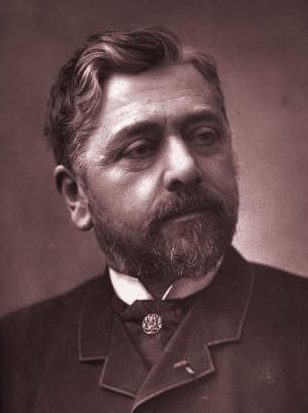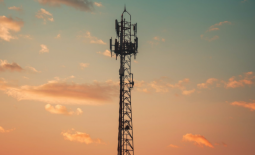Eiffel’s Guide to Towering Success
 March 31, 2015 is the 126th anniversary of the Eiffel Tower opening to the public. You might think of it as a stellar achievement of engineering and tourism now, but back in 1889 when it opened it was just another project that a small group of people believed in — but had just as much chance of failure as it had for success.
March 31, 2015 is the 126th anniversary of the Eiffel Tower opening to the public. You might think of it as a stellar achievement of engineering and tourism now, but back in 1889 when it opened it was just another project that a small group of people believed in — but had just as much chance of failure as it had for success.
It wasn’t ready, but launched anyway
When the tower officially opened on March 31, not everything was up and running — most notably, the elevators. You’d think to successfully open a structure that was 984 feet tall (the tallest building in the world at that time!) to the public, you better have the lifts working, right? Nope. On launch day Eiffel himself, along with a handful of Paris city council members (and a few reporters) climbed the 1,710 steps to plant the French flag at the top and dedicate the tower. The tower opened (shipped!) on-time no matter what (the elevators didn’t come online until two months later.)
What are you waiting to have working perfectly before you’re willing to launch your project?
The elevators to the tallest building in the world didn’t work, and they opened it anyway.
Set a deadline and ship your product in whatever state it’s in at the time. It’s the action of repeatedly launching and improving that matters. The pure act of “shipping” (launching, opening, sharing) means you’ll ship more often. Fix the elevators later.
The idea was crowd-sourced and done on spec
The concept for the tower was born from a contest held by the Journal Officiel to “study the possibility of erecting an iron tower on the Champs-de-Mars”. Eiffel and his partners’ proposal was selected as the winner from among 107 entries. Once approved, construction began in 1887 and was completed in two years.
What opportunities are you missing by saying “No”?
I know many artists, writers, musicians, and consulting professionals who make it a policy to say “No” to unpaid opportunities to showcase their work to a new audience. Even if you’re the highest-paid pro at the top of your game with the busiest appointment calendar on earth, I think saying “No” should be the exception — not the rule.
The problem with a No-First Policy is that it becomes set in stone and you forget why you started saying No in the first place. There is value in maintaining a public profile. There is value in showing your work right next to someone who could be a competitor. There is value in being asked to participate and saying Yes. Yes means open to possibilities. Yes means open to opportunities. Yes means open to new introductions and meeting new friends and fans.
I worked with a guy in Radio that created a spec-spot plan for the sales team. The salespeople would collect important information from the client about what they wanted their radio campaign to achieve, and then he would create an audio spot just like the one which would run on the air if the client decided to sign an advertising contract. The salesperson would then go play the spot for the prospect to get feedback. Can you imagine how exciting it was for the prospect to hear their company name and information in a “real” radio ad? Were they changes that had to be made to the spot? Sure. But the spec spots helped close the sale almost 80% of the time versus just going back to the prospect with a written script. Well-worth the extra effort. Why don’t more radio stations use this program? I don’t know, but I’d guess it’s because they say No to doing voice work and production for “free”.
Do I think you should say Yes all the time? No.
But, I do think you should start from a place of Yes and see how you could help/participate/perform/etc. rather than using No as your default position.
It was controversial
You look at the Eiffel Tower now and think legendary landmark and tourism jackpot, but when the plans were originally announced there was an outcry from the public against erecting such a structurally unsound eyesore in the middle of one of the most beautiful cities in the world. Artists from around Paris organized and protested the creation of the tower in a letter to the newspaper, calling it “monstrous” and saying it would “debase” the city. Eiffel believed in his project, both from the aesthetic and architectural integrity. He not only publicly defended his vision, he did so in the language of the artists who were so against the tower. In his own letter to the press he stressed the beauty of the tower elements; referencing the “essential lines of a monument” and the vaulted curves — which were not only meant to achieve elegance, but to unite strength and beauty in a harmony that strengthened the structure and made it resistant to wind. He called upon the artists to reconsider their stance by using the principles and vocabulary of their own artistic calling.
Did Eiffel win them all over to his side? Probably not, but he moved forward and made his vision a reality despite what the critics said. He knew his tower wouldn’t be loved by everyone, but he knew there was an audience for his work and he did his best work for them — not the critics.
Are you letting the lesser voices of dissent scare you away from your greater vision?
Do your best work for yourself first, your fans second, and your critics never.
Will every single one of your projects end up being as successful as the Eiffel Tower? Who knows?
But if you need a guarantee of success before you ever start or ship one of your projects, you’ll never actually create anything. There are no guarantees — only the opportunity to share some of your best work with the world, and the chance it will connect with some of the people in it. Some of the people — not all of the people.
Like it says on the official Eiffel Tower website:
“Time alone always proves the final judge.”




